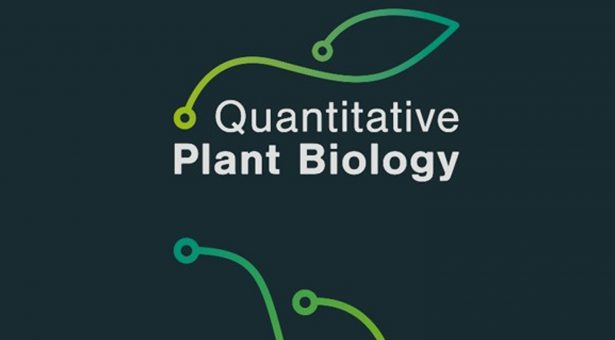How to know what questions to ask; taking an quantitative approach

Earlier this year in collaboration with Cambridge University Press, we launched a new open-access scientific journal, aimed at providing an interdisciplinary forum for high quality research on ground-breaking discoveries and predictions in quantitative plant science.
The journal, Quantitative Plant Biology aims to publish papers that enhance our quantitative understanding of how plants function from a physiological and evolutionary perspective.
We asked Editor-in-Chief Dr Olivier Hamant his thoughts on why this new journal is important and how taking a quantitative approach can generate interesting questions and answer them accurately.
“Science, is based around finding answers to questions.
First you have to identify what question to ask. Then, when you have a question, you need to develop a strategy around how to answer it.
As scientists, we tend to spend a lot of time on the strategy and less time on finding the right questions to ask.
So, the first question to ask is, what makes a good question?
Often a good question is a simple question. So, what makes a simple question?
A simple question is one that;
- Doesn’t require too much background knowledge, making it accessible to a wide audience
- Doesn’t have a simple answer. If a question has a simple answer, it is no longer a question
- Thus, if it has a complex answer, it opens up new area of research – this is why we want to target simple questions
Examples of this can be found throughout scientific history, for example when Gregor Mendel asked the simple question; how does heredity work? His attempts to answer this question opened up the new research area; genetics.
Within the broad field of genetics, in my own research we ask the question; how do genes relate to shape? To answer that question, we needed to think outside the discipline, adding mechanics, physics and mathematics. By doing so, we see how genes and proteins are affecting the mechanics of the cells, in turn affecting the shape of the cells and the tissues. In turn, a shape can then affect the gene, through mechanical forces, but also through biochemistry. Altogether, this created a new field of research that some call morphodynamics.
This is what the new journal Quantitative Plant Biology is all about; taking simple questions and trying to address them by formalising an answer. The mathematical formalisation is really important to getting to the bottom of the question and this is what the journal is about.
This is very timely, because we are generating a lot of data at the moment, be it bioimaging, omics, or virtual data – we have a lot of data – but we need to make sense of it. The quantitative approach is one way to do it.
Finally, you start with a simple question and from that many other questions emerge. By adopting a quantitative approach, we can;
- Extract meaningful information from huge (and heterogenous datasets)
- Consider the contribution of gene network topology in regulation
- Understand the roles and randomness of stochasticity
- Unravel multiscale emerging properties
- Assess the counter-intuitive implications of feedback
- Visualise the invisible (for example forces)
- Establish how robustness occurs
Our brains, as any optical illusion demonstrates, are limited and, as many studies have shown, we are subject to several cognitive biases. This can be problematic as scientists, because we are analysing our data through the lens of our biases.
For example, we are innately conservative and it is easier to stick to what we know than try something new. It is therefore hard to go against established dogma. As Max Planck said; ‘A new scientific truth does not triumph by convincing its opponents and making them see the light, but rather because its opponents eventually die and a new generation grows up that are familiar with it’.
Similarly, as humans we struggle with thinking about systems and understanding feedback. For example, take the Cathy Freeway in Houston, Texas, which suffered from heavy traffic jams. Human intuition suggests that if you want to solve the simple question of a traffic jam, you can add another lane to the road and that will alleviate the congestion. However, if you add more lanes, what you actually do is make the road more attractive, meaning more traffic uses them and the jams get worse. This is known as the ‘Braess Paradox’. Unable to learn this lesson, planners continued to add lanes to try and relieve the increasing jams and currently the Cathy Freeway has 26 lanes and the jams are as bad as ever.
We can apply the Braess Paradox to food security. A simple solution to food security would be to increase food production. However, there is increasing evidence that if you increase production, you increase the problems associated with distribution and in-turn all you ultimately produce is more food waste.
The quantitative approach provides a way to go around these biases, because it allows us to address the questions in an unbiased way, by trusting the data.
Quantitative approaches also allow us to maximise the output of another revolution; the rise of citizen science, which allows us to dramatically increase our sample sizes and can see huge heterogenous datasets generated from all over the world.
That is why I am really excited to be part of this new Quantitative Plant Biology journal. I really believe it will stimulate effort in the plant community, both to formalise answers to questions and to inspire new questions and new fields of research.”
Dr Hamant, is an INRAE Director of research at the RDP institute at ENS de Lyon. A biologist by profession, he tries to understand how plants use forces to control their development, by combining molecular and cellular biology, mechanics and modelling approaches.


